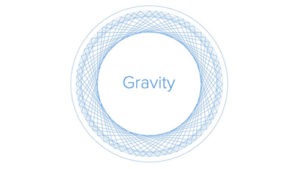Centrality vs Centralization

Centrality and centralisation are two completely different things.
Within the bitcoin network, there is a centrality which is not the same as centralisation. Centrality is a term used within network theory as well as centralisation. Centralisation is a single point, many central points can exist within a network; these are centralized points, not a centrality. Whereas a centrality within a network is composed of many points forming a central nexus.
For example, in the traditional financial structure, a bank is a central point, the traditional financial network has many central points such as banks and other financial institutions. These are centralized points where information and network flow gathers and either exits the network structure or flows through the essential points.
A centrality in a network structure is composed of many points which can carry the same information and throughput. When a bank fails, its services and funds it holds are often unreachable, sometimes lost.
Seems far more complicated than BitCoin should be? That is because it is.
LN is a Rehash of the Traditional Structure
The Lightning network headed by Blockstream and pushed as the “solution” to an invented problem that never existed so that Blockstream can milk users and miners of revenue tries to break a small-world network back into a mesh network with centralized failure points (LN-nodes).
Within bitcoin miners form a centrality within the network structure, outside the centrality of mining nodes there exists users as extensions on the network. These users can either be individuals or businesses or software projects which require what the majority of people understand as a “full node”. Yet these “nodes”, if they are not mining, do not exist within the centrality of the network topology.
Mesh networks often have centralized points of failure, this is exactly the same LN network which has bastardised BTC, it has many centralized points of failure, similar to banks within the traditional financial network. When a centralized point goes down there often occurs loss for users and stakeholders and the network stutters or fails completely.
Networks with centralized points are also prone to corruption, manipulation and takeover.
Part of the magic within the bitcoin is about within the centrality of the mining nodes due to the two races, finding a block and propagation of said block, it enforces an eternal competition for the miners to constantly grow and provide the best service possible to users. The other key important part of the magic is about within a centrality if one node goes down, or many nodes go down, the network will self heal, and miners will continue to find blocks and propagate them.
In the third and final part of the magic, is that due to the centrality nature within the small world network that is bitcoin, users transactions and information is propagated in milliseconds across the world and back again. This enables many use cases which have for now never been possible, we will go into some of these in further articles or you can read other experts within this field.
The Network with Users
There is also the understanding of man in the middle attacks (MITM) which can readily occur on any network which has three or more hops. With mesh networks and 99.99% (possibly 100%) of cryptocurrencies, they all fail to a man in the middle attack. While bitcoin (not a cryptocurrency) as it really exists, is a small-world network with what we will say is one hop within the centrality of the network, there is no possible way for a MITM attack.
Read More: Bitcoin Network Topology ELI5
There is no need to wait for one confirmation or more unless you are doing high-value transactions and feel the need for extra security. Instant transactions, otherwise known as zero confirmations to the wider world, provides you with an extremely high amount of security for your transaction and information. Again, this is due to the centrality of the small-world network of Bitcoin.
Many other use cases can make excellent use of a small world network propogation, especially when layered on a financial system. There are large amounts of global funds that move along the current financial mesh network, often taking a long time to be settled. For large organizations this can amount to costly sums, these are currently understood to be a cost of doing business on the global market.
Automated (A.I) processes, health and other research, trade and more can be much better performed on a boundless database with a global reach. But these conversations and others are for further articles.
Resources:
Man in the Middle Attack (MITM)


